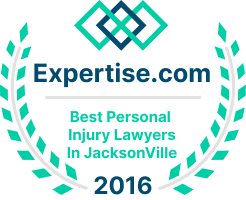Trying Personal Injury Cases
Obtaining a full measure of justice in personal injury cases can be very difficult. Insurance adjusters and jurors can be skeptical of injury cases because of the “bad apples.” We have all seen news stories where someone supposedly disabled due to an accident is secretly filmed performing strenuous activity.
It is important for all of us to be on the lookout for people trying to cheat the system. It is also important to be aware that a prejudice can result through which a potential juror believes that all injury cases are exaggerated or, even worse, fraudulent. The results can be disastrous for a legitimately injured person who deserves reimbursement for his or her medical bills, lost wages, disability and pain and suffering.
It is important to acknowledge that this prejudice exists. It is important for a lawyer to instill confidence in insurance adjusters, other attorneys, judges, mediators and jurors that the client’s personal injury case is not one of the bad apples. How do we do that?
Well, for one, we are very selective about the injury cases we accept. We prefer to focus on high quality cases instead of a high quantity of cases. This helps give our firm a reputation that the cases it handles are serious and genuine. Of course, this can make obtaining a fair settlement much easier.
If a fair settlement is not offered, then trial becomes necessary. Thankfully, our justice system allows us to participate in who gets selected to serve as jurors. During this process, we interview potential jurors in detail to determine which ones may harbor an unfair prejudice towards personal injury cases as a whole.
It does no good to ask potential jurors a question like “does anyone here think all injury cases are exaggerated?” Essentially no one (except those simply trying to escape jury duty) would openly admit to such an obviously unfair bias. They will, however, honestly answer less direct questions that can reveal an underlying prejudice. This is where skill, finesse and experience are absolutely necessary.
During trial it is very important to combine visual aids with verbal presentations when making a statement, argument or when questioning a witness. Some people learn better through visualization, others learn better by hearing, but almost everyone learns best when verbal and visual information is combined. Powerpoint presentations, physical models and videos can be very effective in achieving this goal. To do so, an attorney must have technological skills in order to interface with the media system in the courtroom.
Trial is a dynamic experience. In addition to paying attention to a witness, an attorney must also be aware of the actions of the judge and opposing counsel along with the body language of the jury. Because of this, we always try cases with two lawyers. Doing so does not cost the client anything additional, yet provides another set of eyes and ears as no one person can catch all of what goes on.
There are a lot of nuances to this business. It took us many years to learn them. Simply put, it is vitally important for a personal injury lawyer to have the experience, skill and legal knowledge to effectively try and case.









